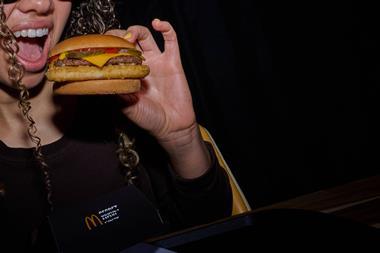from Doug Hargrove, commercial director, Torex Retail
Sir; Despite last week’s news that Valentine’s Day 2006 will be the start of a no PIN, no purchase policy (The Grocer, October 15, p8), there are still several obstacles to the universal adoption of chip and PIN. Banks, retailers and consumers all have issues to address to ensure that Valentine’s Day 2006 does not turn into a retail massacre.
Consumers have adopted a very casual approach to chip and PIN as a result of retailers allowing a generous grace period for the technology to bed in. But this is set to change to a much harder stance from APACS, which may affect the way consumers perceive retailers when they want to spend money but are not allowed to because they lack a PIN number.
This scenario is most likely to impact on small community retailers, who probably know many of their customers personally. Applying a ‘no exceptions’ policy could be highly embarrassing for retailer and customer alike.
Perhaps the thorniest issue is measuring the actual benefits being delivered by chip and PIN. Retailers have had to invest a lot of money in technology to protect themselves from fraud, so they will want to know the real impact it is having on fraud - especially since chip and PIN has effectively tilted the balance of liability towards retailers.
The latest figures reveal that retail-associated card fraud between January and June 2005 was down from £127m for the same period last year to £89m.
At face value this seems like good news, but the question is: has retail fraud dropped overall as a result of chip and PIN, or have the banks just succeeded in reducing their liability and passing it back to retailers?
Sir; Despite last week’s news that Valentine’s Day 2006 will be the start of a no PIN, no purchase policy (The Grocer, October 15, p8), there are still several obstacles to the universal adoption of chip and PIN. Banks, retailers and consumers all have issues to address to ensure that Valentine’s Day 2006 does not turn into a retail massacre.
Consumers have adopted a very casual approach to chip and PIN as a result of retailers allowing a generous grace period for the technology to bed in. But this is set to change to a much harder stance from APACS, which may affect the way consumers perceive retailers when they want to spend money but are not allowed to because they lack a PIN number.
This scenario is most likely to impact on small community retailers, who probably know many of their customers personally. Applying a ‘no exceptions’ policy could be highly embarrassing for retailer and customer alike.
Perhaps the thorniest issue is measuring the actual benefits being delivered by chip and PIN. Retailers have had to invest a lot of money in technology to protect themselves from fraud, so they will want to know the real impact it is having on fraud - especially since chip and PIN has effectively tilted the balance of liability towards retailers.
The latest figures reveal that retail-associated card fraud between January and June 2005 was down from £127m for the same period last year to £89m.
At face value this seems like good news, but the question is: has retail fraud dropped overall as a result of chip and PIN, or have the banks just succeeded in reducing their liability and passing it back to retailers?













No comments yet